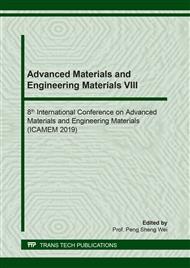p.3
p.12
p.19
p.27
p.33
p.41
p.47
p.53
Pressing and Bonding Strength of Metal Matrix Composite
Abstract:
This article aims to improve the bonding strength between metal and plastic,the metal substrate is subjected to high-energy shot peening to make the surface self-nitrified, and the orthogonal test scheme was designed based on the process parameters of high energy shot peening and spraying. After molding, the bonding strength of the metal matrix composite was tested by the vertical stretching method. We studied the effect of the cast steel shot diameter, the shot peening pressure, the shot peening time and the plasticizing temperature on the bonding strength of the composite. The combination of process parameters was determined when the bonding strength was optimized, then use the numerical fitting method to predict the combination of process parameters when the bonding strength is the highest, the optimization results are verified by experiments. The results show that the diameter of the cast steel shot is 4.96mm-5.04mm, the shot peening pressure is 0.49MPa-0.51MPa, the shot peening time is 10.9min-11.08min, and the plasticizing temperature is 278.2°C-282°C. The bonding strength of the composite is optimal Keywords: Metal matrix composite, High-energy shot peening, Press forming; Bonding strength, Process optimization
Info:
Periodical:
Pages:
19-26
Citation:
Online since:
July 2019
Authors:
Price:
Сopyright:
© 2019 Trans Tech Publications Ltd. All Rights Reserved
Share:
Citation:


